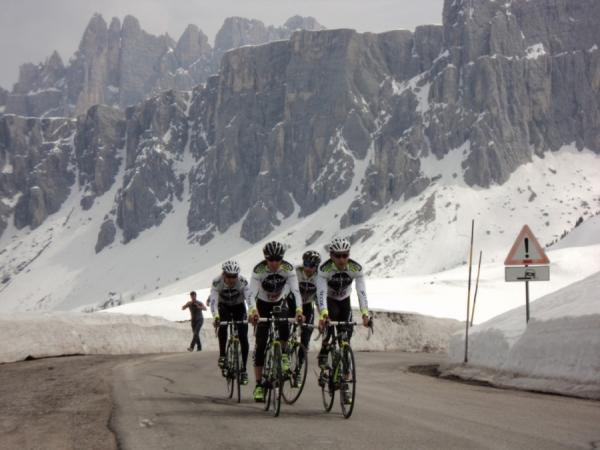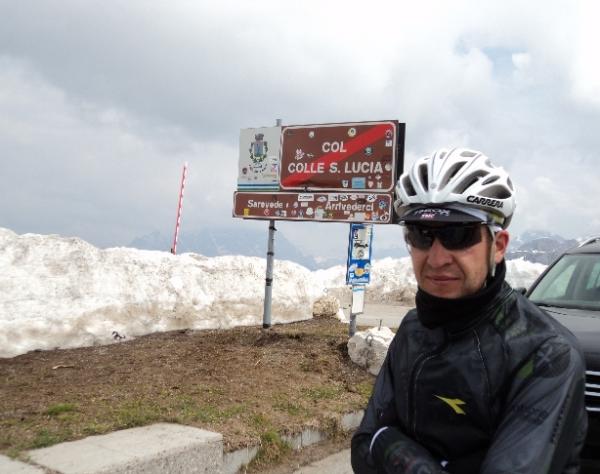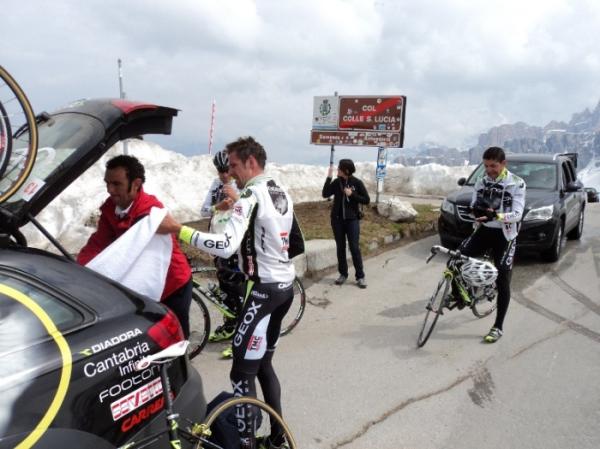Geox-TMC on Giro reconnaissance in the Dolomites
Sastre claims stages will be the toughest he's ever experienced



Forty major mountain climbs feature in this year's Giro d'Italia and Team Geox-TMC used the past weekend to take a trial run on the climbs in the major Dolomite stages, between the provinces of Veneto, Friuli and Trentino.
Sastre on track for Giro d'Italia
Menchov will lead Geox-TMC at Giro D'Italia
Giro d'Italia start list
"We saw how hard and epic this upcoming Italian Giro may well turn out to be," Carlos Sastre surmised.
On Saturday, Sastre, Denis Menchov, Fabio Duarte, David Blanco and Gianpaolo Cheulthe covered about 70 km on the Monte Crostis and Monte Zoncolan in Friuli.
"We all know how hard the Zoncolan is, but I think the Crostis will also be gruelling; it's an all new climb that I wasn't familiar with, and I really wanted to see it before the Giro," said 2009 winner Menchov. "It's extremely challenging but the real problem will be coming off it on the steep, technical downhill, on a narrow road with ruined asphalt. We're going to have to be very careful. It's going to be a problem to feed, drink and recuperate energy on this downhill before attacking the Zoncolan."
Rival, Saxo Bank-SunGard's Alberto Contador has also been doing reconnaissance on the Crostis, saying that the Stage 14 pass, "gives me fear."
On Saturday afternoon the team then went to scope out the Grossglockner climb in Austria. The 13.6km climb starts gently but then ramps up all the way to the finish with a final two kilometres at 10.7 per cent.
Next on the agenda was a nearly 80 km workout on the roads of Belluno Province to check out the Giau and Fedaia passes, then attempting the novel arrival at Gardeccia, in Val di Fassa.
The latest race content, interviews, features, reviews and expert buying guides, direct to your inbox!
"Giau and Fedaia are two important climbs, always worthy of respect," explained Sastre. "Giau is especially hardest in the final stretch and the Fedaia has that central part with long straights that seem endless. I wasn't familiar with the Gardeccia climb, it has some extremely challenging stretches and you really need to take into consideration that you get to this wall after more than 200 km in the race."
Sastre had a slow start to the season following illness with the bulk of his race condition tested Vuelta Castilla y Leon. He finished 52nd overall, 12min 29sec down on winner Xavier Tondo of Movistar. Sastre's best result came in the individual time trial where he finished 31st.
"In how ever many years I have been competing professionally, I don't think I have ever seen such long, hard and spectacular stages as the ones we'll be riding on 20 and 21 May", he confirmed.
The winner of the 2008 Tour de France and also one of the riders with the most experience in the grand tours, with 10 Tours de France, eight Vueltas and five Giros behind him, predicts that: "In this Giro, a huge number of things are going to influence the outcome. I think in this race more than ever before, luck, strength, the style of riding and eating are all going to be big influences... this is going to be an amazing Giro," he concluded.
As a sports journalist and producer since 1997, Jane has covered Olympic and Commonwealth Games, rugby league, motorsport, cricket, surfing, triathlon, rugby union, and golf for print, radio, television and online. However her enduring passion has been cycling.
Jane is a former Australian Editor of Cyclingnews from 2011 to 2013 and continues to freelance within the cycling industry.